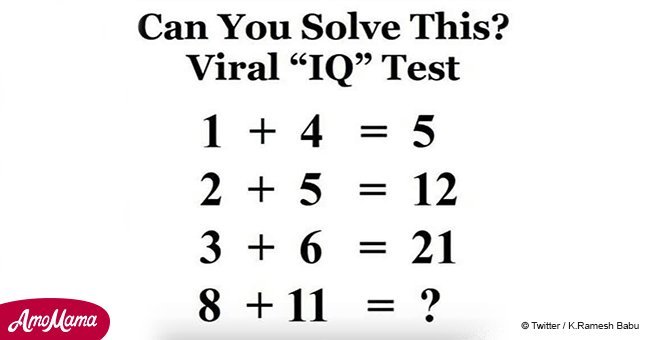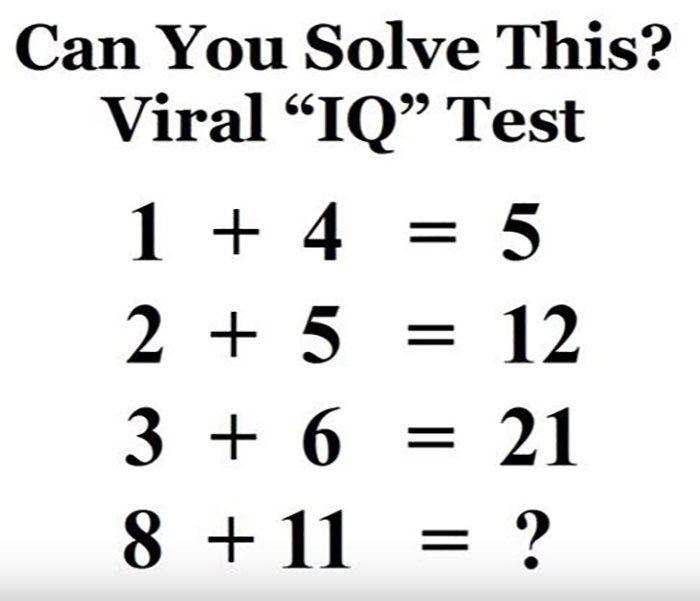
People face serious problems trying to solve this brain teaser
An 'IQ' test has gone viral for being such a challenge to many.
The '1+4=5 puzzle' is explained in a video shared on the YouTube channel, MindYourDecisions.
Only one in a thousand people is supposedly able to answer the puzzle, according to Randall Jones, who posted it on Facebook on April 18, 2016.
The puzzle goes: If 1+4=5, 2+5=12, 3+6=2, what is 8+11=?
The Facebook post quickly went viral, generating 3.1 million comments from netizens around the world.
The post has also been shared nearly 140,000 times. It clearly piqued the interest of the public, especially math lovers.
Only few got the correct answer, though: 96. It is mathematically explained in the video shared by MindYourDecisions.

Source: YouTube / MindYourDecisions
Follow us on Twitter @amomama_usa.
The six-minute clip also went viral, with 6.5 million views. It has also drawn nearly 40,000 comments, which are mostly answers and mathematical computations.
It turns out that many of those who tried to answer the puzzle came up with a different answer. A debate ensued as to the correct way of answering the logical puzzle.
"The answer is not 96, one answer can be 96, as well as one answer can be 40. The puzzle has multiple solutions, not one correct answer," commented Andreas Thomsen a month ago.
Mike Resis also shared his two cents: "What 'many people' think is the answer does not qualify as 'the answer.' That's the solution to this puzzle and I'm sticking to it. There is no solution unless you can accept that the 'many people' claimed by the poster of this video are right. There is no 'correct' solution so quit arguing."
Other YouTube users showed the same answer - 96 - but used a totally different method.
The owner of the MindYourDecisions YouTube channel also pointed out in the comments that there's also another way of solving the puzzle.
"There was another obscure answer I found in my research that I omitted since I felt it was too complicated," they said, and went on to present a more complex mathematical computation.
